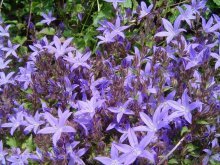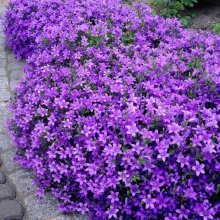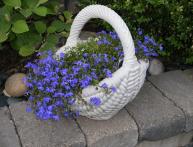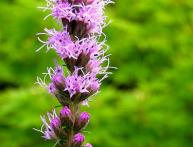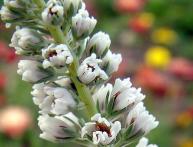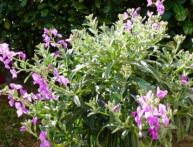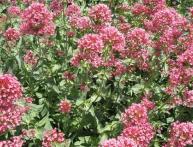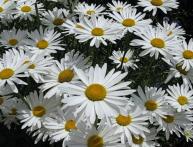Pozharsky's bell: useful tips for plant care and propagation
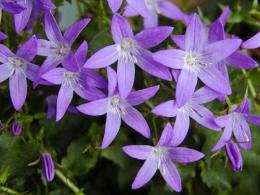
Pozharsky's bell is a popular flower that many gardeners plant in their summer cottages.
But this plant also requires certain care; you need to know how to grow it.
This bell has been decorating gardens for many years. He has earned the love of people from all over the world as he has an attractive and cute appearance.
Content:
What kind of flower is this?
Pozharsky's bell pleases the eye not only in gardens, it also grows in the wild. It can be found in the Balkans.
This is a perennial plant that does not have much height, and its shoots are creeping. It grows up to 30 centimeters in width and up to 20 in height.
The foliage of the plant is round in shape, it is small, and the inflorescences resemble stars or bells. They are collected in groups and located at the end of the stems.
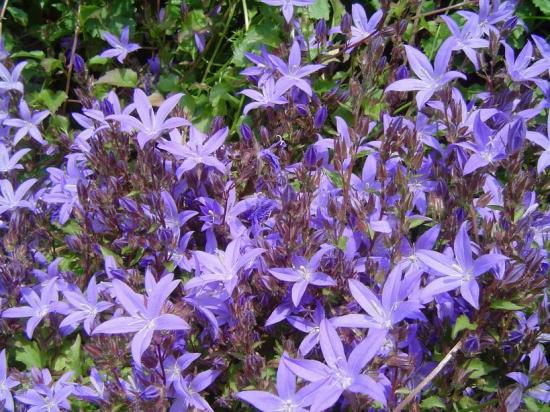
The plant blooms for about a month, this happens in July. Pozharsky's bell has mountain roots, and appeared in gardens about a hundred years ago.
It tolerates shade well and is not afraid of winter cold. This is a fairly hardy plant. You can find inflorescences of different colors. They are:
Planting Pozharsky's bell
For those who decide to plant a bell in their garden, you should know some nuances.They are almost the same in all types of plants.
Although the bluebell tolerates shade well, it is recommended to plant it in a place where the sun shines for a long time. Water should not stagnate here.
If a place is chosen where moisture accumulates near the roots, then the plant may suffer in winter. The bell will freeze, so it will die.
Lightweight is ideal for the plant priming. If it is heavy, sand or humus should be added to it. Gardeners advise adding turf soil to poor soil.
Soil preparation must occur in advance. Initially, the area where it is planned to plant the bell should be dug up, weeds should be removed, and humus should be introduced.
It is better not to add fresh manure to the soil, as the plant can be infected with fungi. Thus, you need to plant the bell in neutral soil. In other cases, additional additives are added.
Plant care
The bell should not be flooded; watering should be moderate. If the weather is humid, then the plant does not need to be watered. To make flowering last longer, it is recommended to eliminate inflorescences that have already faded.
Video on how to properly grow a bell:
The bell grows intensively in the spring, so it is at this time that fertilizers should be applied.
It will be useful to add wood ash, which is laid out on the surface. Should be less often mulch soil that is located near the roots.
When the buds begin to set, you can use a solution of mineral fertilizers.
It should be remembered that the bell does not reach a large size, but it can become overgrown with weeds.For this reason, gardeners advise systematically removing them; at this time, you can loosen the soil, and the bluebell loves this procedure.
Some people collect plant seeds to later use for planting.
In this case, you need to observe the shade of the seed pod. It should turn brown, then it should be cut off. Otherwise, the plant will begin to sow on its own.
The bluebell is rarely attacked pests, diseases appear. You should be wary of fungal diseases.
Bellflower propagation
There are different methods for propagating bells. It is recommended to do this vegetatively:
- cut off the rhizome
- divide the bush
- use root suckers
- use cuttings
It is allowed to use cuttings that appeared in the spring for propagation.
You can also collect the seeds from which bluebells are grown. If the roots have short branches, then it is better to exclude a method in which part of the rhizome is cut off. A plant that grows long roots is suitable for this method.
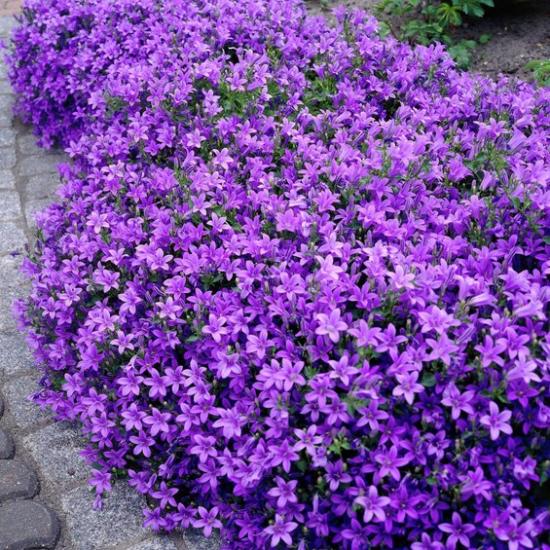
If reproduction occurs with the help seeds, then first you need to collect the boxes and then dry them.
Next, you need to open the pores from which the seeds spill out. They are black in color and should be placed in a bright place. They need to be poured out in the fall, but before frost appears.
If such a period was missed, then sowing can be done in the spring. Some gardeners initially grow seedlings, and some pour seeds directly into the ground.
Seedlings should be planted in the soil when 3 leaves appear and there is no frost outside.
If you use the vegetative propagation method, then the result will be a plant that completely matches the mother bell.
It will have all the signs and characteristics. This is especially important if a person is engaged in growing rare species.
When 3 years have passed after landing, Pozharsky's bell can be divided. But this should be done carefully.
After this procedure, the plant will need some time to take root. It is better to choose May or August for this.
To divide the bush, you need to follow this sequence:
- Initially, the bush needs to be dug up.
- Next, shoots that have formed above the ground are removed.
- The root is divided into several parts so that each of them contains renewal buds and divisions.
- The resulting seedling must be placed in the soil, and the renewal bud must be on the surface of the soil.
So, Pozharsky's bell is a beautiful plant with which you can decorate your summer cottage, but you also need to take into account the rules for caring for it.
Interesting information about the vegetable garden

